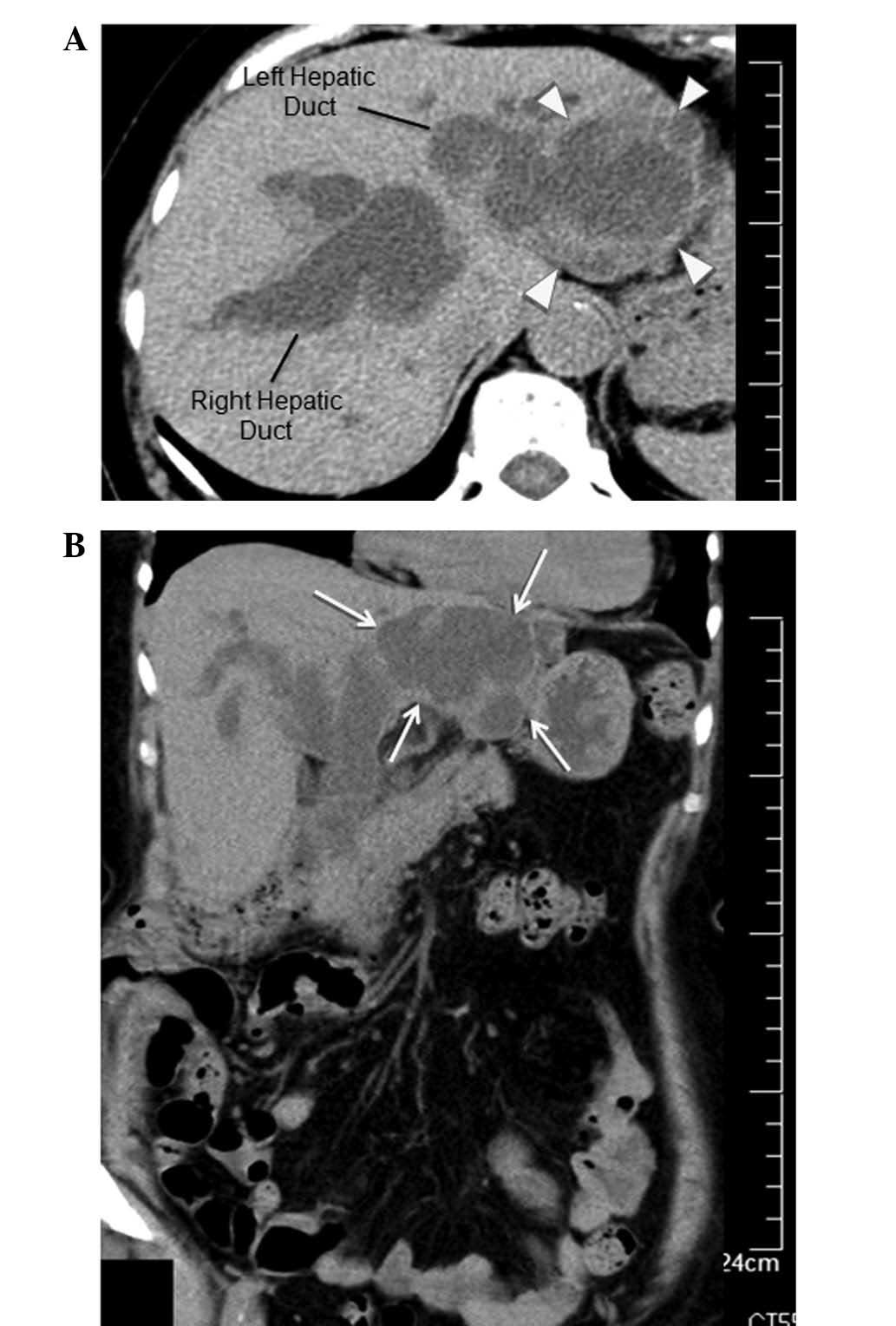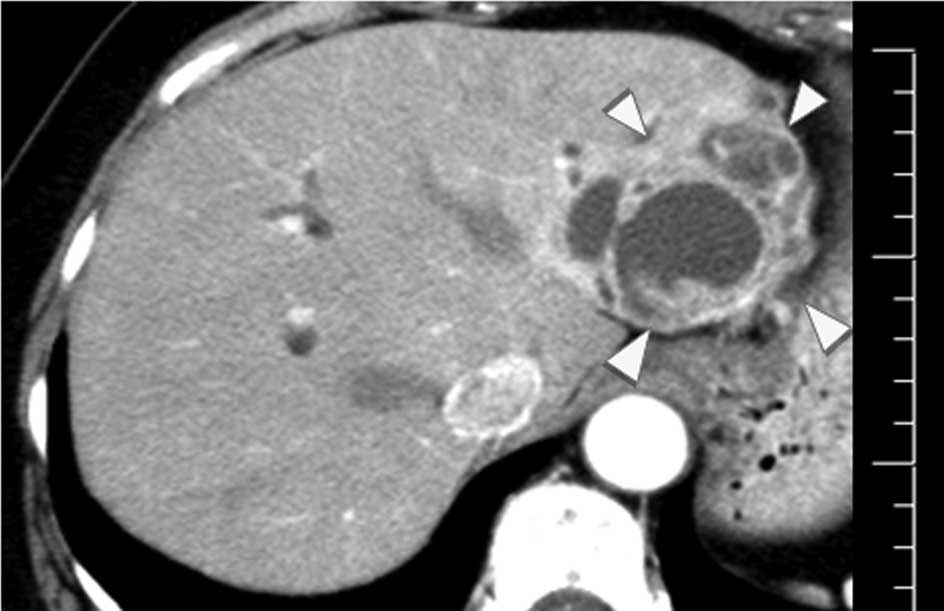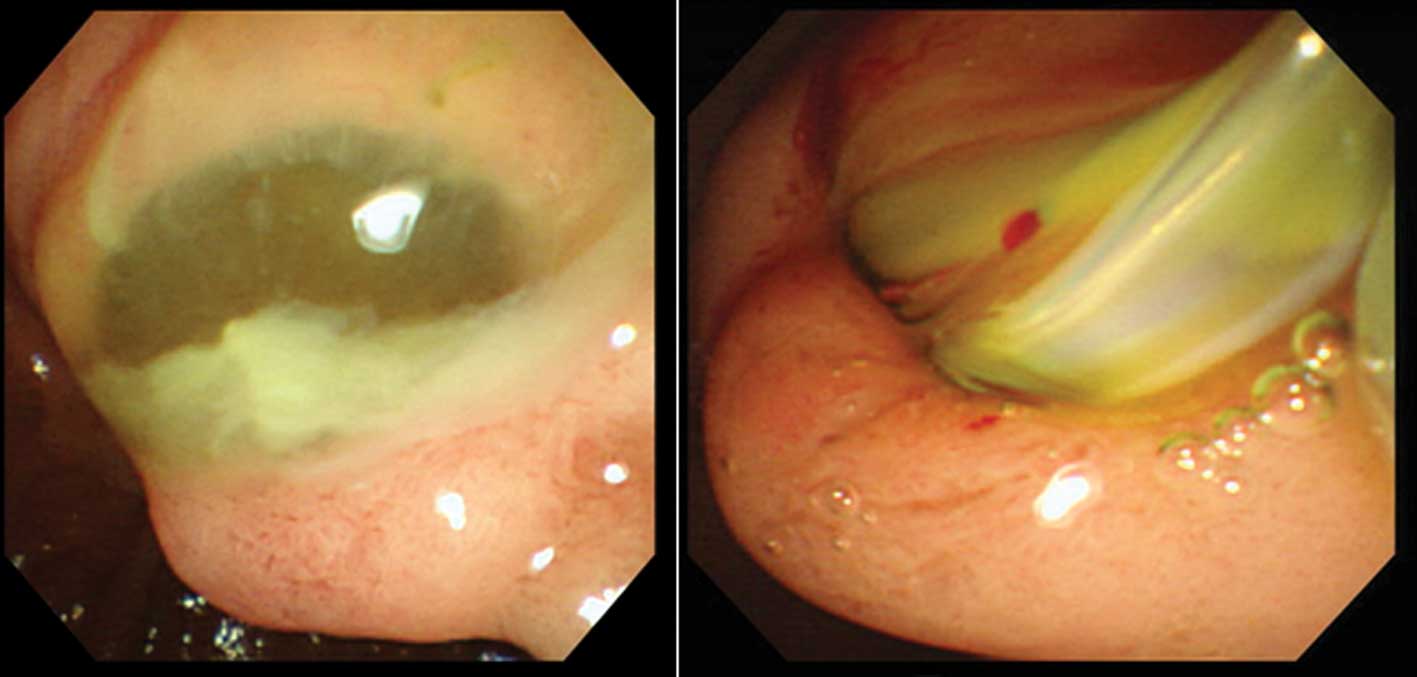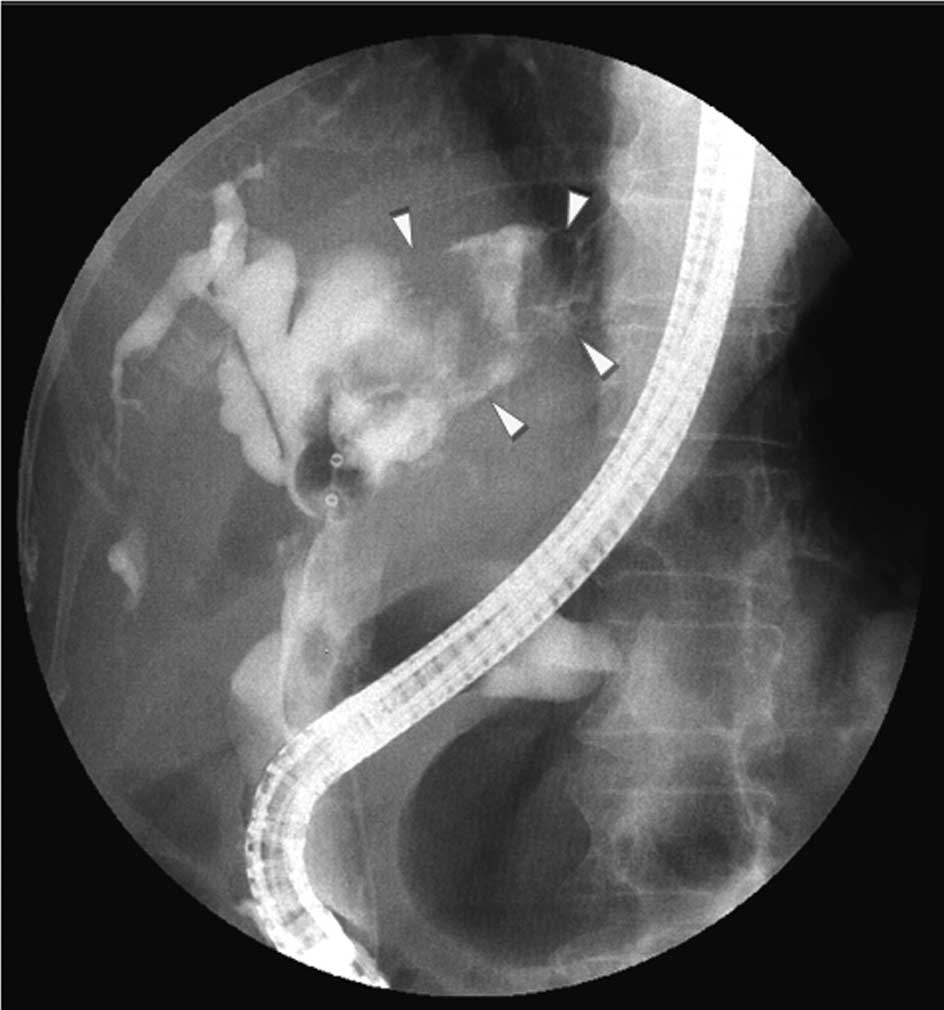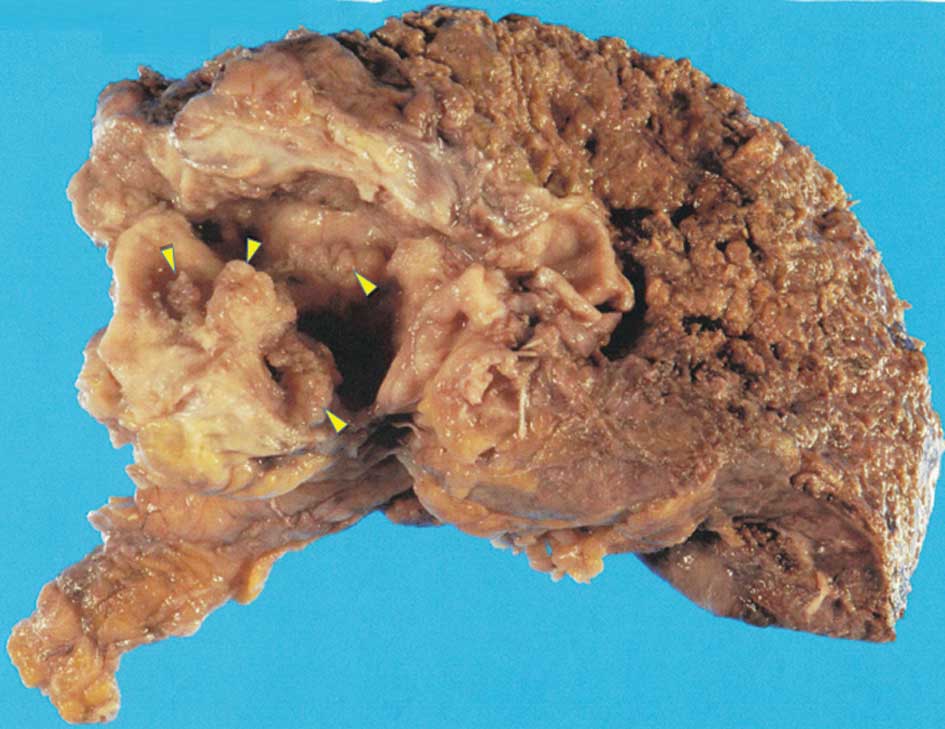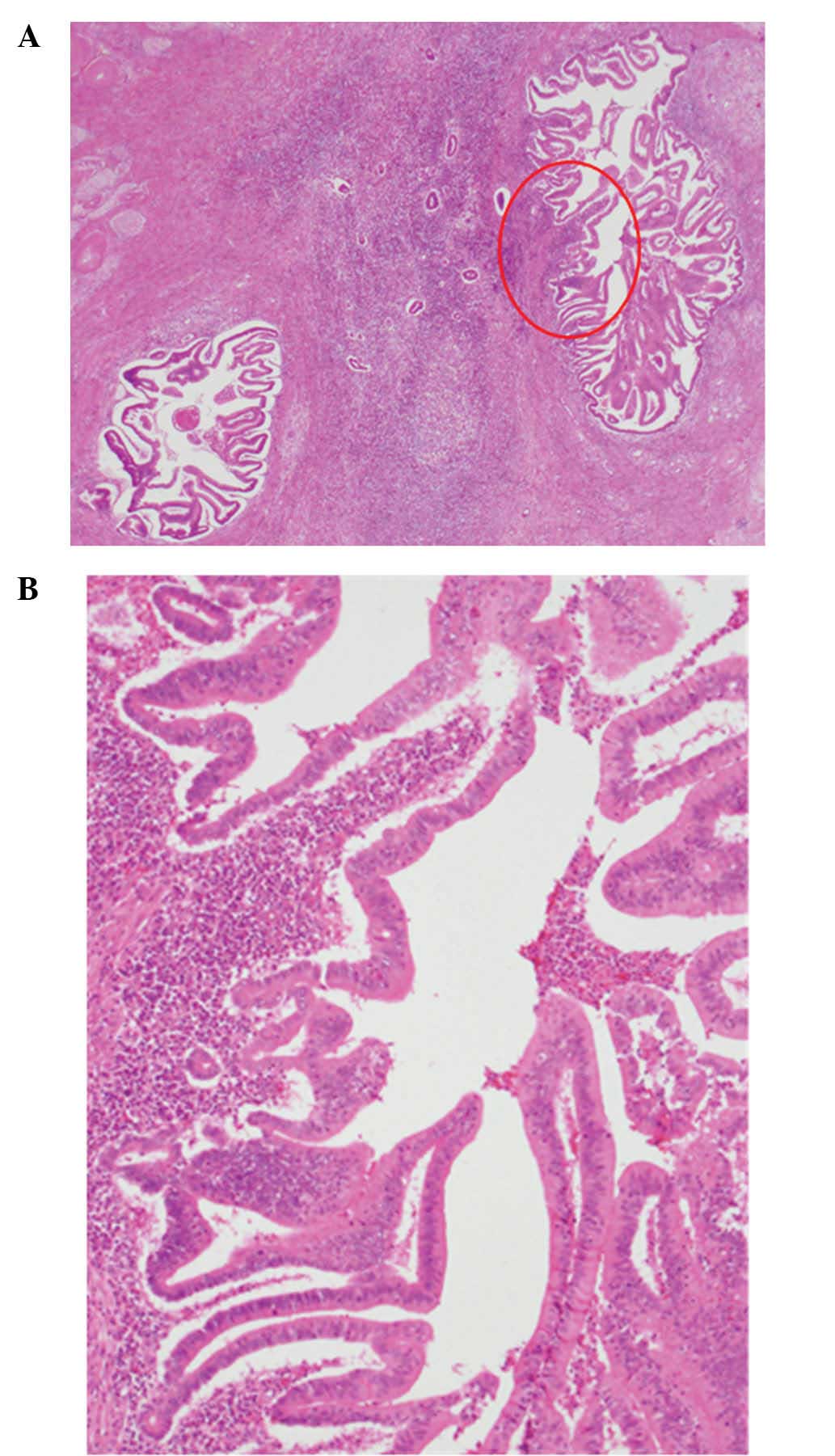Spandidos Publications style
Fujita M, Wakui N, Yamauchi Y, Takeda Y, Sato T, Ueki N, Otsuka T, Oba N, Nishinakagawa S, Minagawa M, Minagawa M, et al: A case of branch duct type intraductal papillary neoplasm of the bile duct treated by open surgery after 11 years of follow‑up. Mol Clin Oncol 1: 965-969, 2013.
APA
Fujita, M., Wakui, N., Yamauchi, Y., Takeda, Y., Sato, T., Ueki, N. ... Kojima, T. (2013). A case of branch duct type intraductal papillary neoplasm of the bile duct treated by open surgery after 11 years of follow‑up. Molecular and Clinical Oncology, 1, 965-969. https://doi.org/10.3892/mco.2013.160
MLA
Fujita, M., Wakui, N., Yamauchi, Y., Takeda, Y., Sato, T., Ueki, N., Otsuka, T., Oba, N., Nishinakagawa, S., Minagawa, M., Takeda, Y., Shiono, S., Kojima, T."A case of branch duct type intraductal papillary neoplasm of the bile duct treated by open surgery after 11 years of follow‑up". Molecular and Clinical Oncology 1.6 (2013): 965-969.
Chicago
Fujita, M., Wakui, N., Yamauchi, Y., Takeda, Y., Sato, T., Ueki, N., Otsuka, T., Oba, N., Nishinakagawa, S., Minagawa, M., Takeda, Y., Shiono, S., Kojima, T."A case of branch duct type intraductal papillary neoplasm of the bile duct treated by open surgery after 11 years of follow‑up". Molecular and Clinical Oncology 1, no. 6 (2013): 965-969. https://doi.org/10.3892/mco.2013.160















